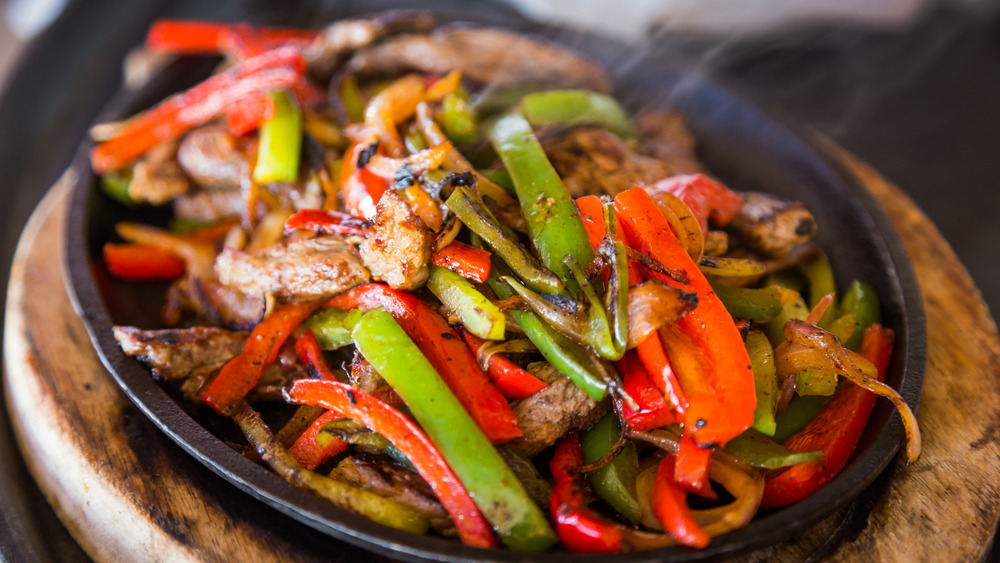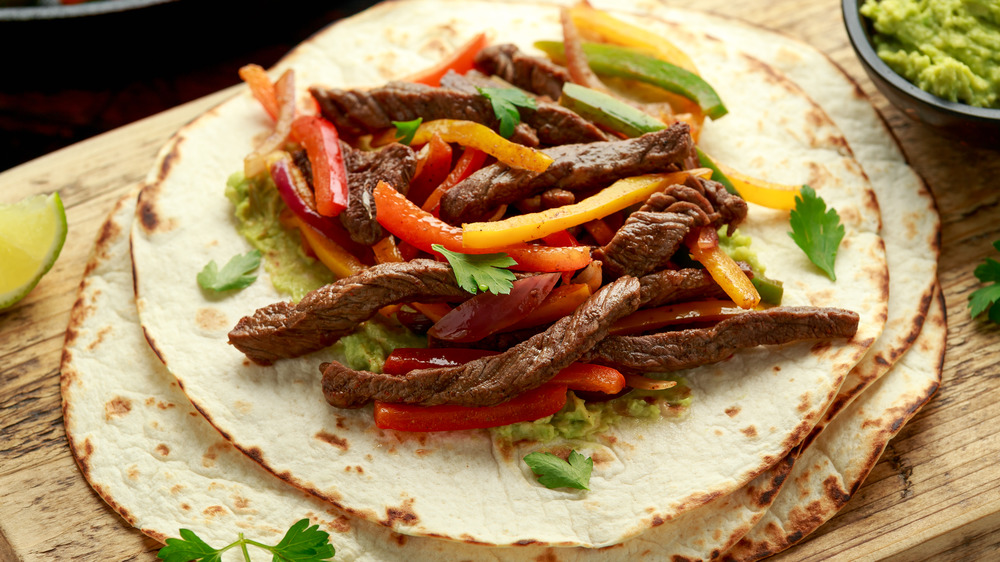The Surprising Truth About Fajitas
There are a lot of things you can expect to find on the menu at almost any Mexican restaurant worth its weight. Tacos, burritos, enchiladas — there are plenty of staple dishes you always know you can resort back to. One of the most popular orders (besides the aforementioned) is fajitas. Served on a sizzling hot platter that never fails to make all of the other diners at your table jealous, fajitas often consist of strips of juicy steak, onions, and crispy red and green peppers. This all comes with a side of warm, fluffy flour tortillas for stuffing, of course.
While you might know a little bit about your favorite Tex-Mex dish (like that it's traditionally made with skirt steak or that "fajitas" is actually just the filling and not the shells), there's one major thing you probably didn't know about fajitas. You likely were unaware of where the popular meal actually came from. Hint: It's not from the country you probably first assumed.
Fajitas aren't actually from Mexico
Despite the fact that fajitas are commonly thought of as a Mexican dish, they didn't originate in Mexico. Fajitas actually started in the U.S., specifically in Texas. Back in the 1930s, Mexican ranchers who lived in West Texas started making fajitas by marinating strips of cheap meat (typically skirt steak) to make it tender and then eating it rolled up in a tortilla.
The Austin Chronicle reports that fajitas didn't even appear on a menu until the early 1970s, when they were first served at the Round-Up restaurant in McAllen, Texas. That's why fajitas are a Tex-Mex dish, rather than a Mexican dish — the people who invented them had Mexican roots but they lived and worked in South and West Texas. Eat This, Not That! also points out that you can tell they aren't an authentic Mexican dish because they're served with flour tortillas, rather than corn ones.

